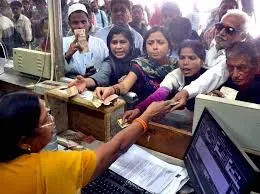As the clock struck 8 pm on November 8, 2016, India came to a standstill and Prime Minister Narendra Modi announced one of the most groundbreaking changes in the Indian economy. The Indian Prime Minister announced his plans of banning Rs 500 and Rs 1000 notes with several motives in mind and thus began India’s struggle with demonetization.
While the year 2019 will bring with it the formation of new Government after the elections in April 2019, the after-effects of Demonetization that happened on November 8, 2016, still haunt the Indian Economy. After more than 3 years of Demonetization, Indian Economic Survey claims that the economy has done away with all the negative impacts of Demonetization. However, economic experts are of the view that the economy is still crying for faster growth and little objective has been achieved by the demonetization move.
- You may also like - GOVERNMENT PROPOSAL TO MEET BASIC INCOME IN INDIA
Demonetisation - Claim and Reality
There is a number of reports on the subject leaving people confused. On the third anniversary of Demonetisation here’s we made a quick review on the claim and reality of Demonetization. Here we go,-
Claim: The PM announced that after scrapping the notes of Rs 500 and Rs 1,000, ATMs and banks would be lacking cash for at least three days.
- Reality: The period ATMs and banks ran out of cash not for days but for months. Nearly 100 people died because of cash-crunch induced anxiety and degradation.
- You may also like- EXAMPLE OF INDIAN DEMOCRACY PART- 1
Claim: Demonetisation would end fake currency and new notes of Rs 2,000 would have special security features.
- Reality: The number of fake currencies has risen by 20 percent. 638 fake currencies of Rs 2,000 were seized. In addition to it, 485 fake currency of Rs 2000 was seized in West Bengal a day prior to the first anniversary of demonetization.
Claim: Demonetisation will help in tax growth and the introduction of digitization will help to boost the economy.
- Reality: Gross Value Added (GVA), industry or sector, in Q3 was 6.7 and Q4 was 5.6 percent of FY17. While of FY16 was 7.3 percent in Q3 and 8.7 percent in Q4. The RBI spent Rs 17,400 in moping idle cash in FY17 and Rs 500 crore in FY16.
Claim: Demonetisation aimed to get cash into the banking system, resulting in the number of taxpayers.
- Reality: Not much has changed. The income tax collection was 20 percent in the financial year 2017 as compared to 16 percent in the year 2015.
[Source - Freepress Journal]
- You may also like - Can INDIA Become The Country With $5 Trillion Economy
Demonetisation Effects on GDP
The ban on old notes is being cited as one of the key contributors to the economic slowdown. With the gross domestic product (GDP) for the April-June quarter slipping to 5.7%, the reality of the economic slowdown could not be ignored. The World Bank has reduced the India GDP growth forecast to 7% for 2017-18 owing to demonetization and GST (Goods and Service tax). The slowdown is being cited as a delayed consequence of demonetization by the World Bank and while there are various other reasons at play, the steep decline has been credited to be an effect of demonetization. (Source -Economic Times)
- You may also like - PRIME MINISTER'S SPEACH ON 73RD INDEPENDENCE DAY
Demonetisation Effects on MSME
Demonetization had a lasting effect on Indians MSMEs (Medium, Small and Micro Enterprises). Various medium and small enterprises turned towards digitalization, however, the micro industries were affected by the worst of its wrath. The micro-industry owners were not a part of the black economy and they were clearly unprepared for the effects of demonetization.
- You may also like - GST ANNUAL RETURN A COMPLETE GUIDE
- You may also like - NECESSITY OF A GOOD GST PRACTITIONER
Demonetisation and Black Money
As per Modi's promise to Indian citizens, the Black money problem will be finished after demonetization but the reality is almost 99% of the money was deposited back to RBI. Black money hoarders do not hold the money in cash according to several finance experts and when this point was highlighted time and again.
Result of Demonetisation
Praveen Khandelwal, secretary-general of the Confederation of All India Traders (CAIT), said: “In the first four months after demonetization, the business was down by as much as 50% for small traders. It took about six months for the situation, currency flow and business to normalize."
Even in agriculture, demonetisation aggravated the sector’s existing stress points by creating new choke points within the supply chain. Cash is a critical input in the agricultural production process and its unexpected shortage had an impact on many levels, including a slowdown in the employment of labor and a dip in overall farm incomes. The Economic Survey for 2016-17, authored under the stewardship of former chief economic adviser Arvind Subramanian and released in January 2017, also echoed these concerns at that time. (Source - Live Mint)
- You may also like - TAX DEDUCTION UNDER SECTION 80C
Three years down the line, 66 percent of respondents in an online survey have said that demonetisation had a negative impact on the economy and labor employment. Only 28 percent of the respondents said demonetisation did not have any negative impact in the survey conducted by LocalCircles, a citizen engagement platform. (Source - India Today)









I have visited so many sites but I never got the site like yours, amazing posts with informative latest things.
ReplyDeletetax return for self employed in London